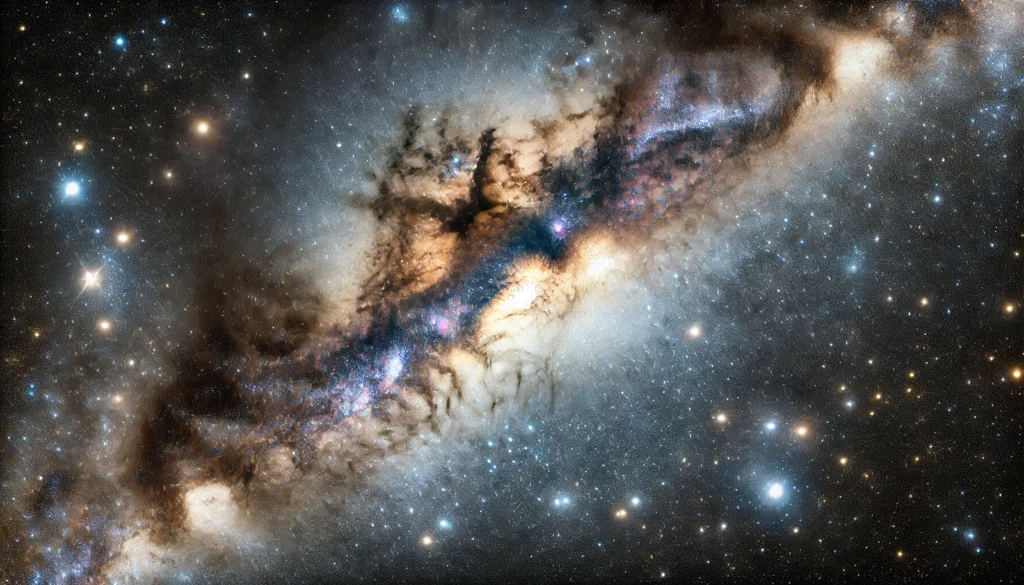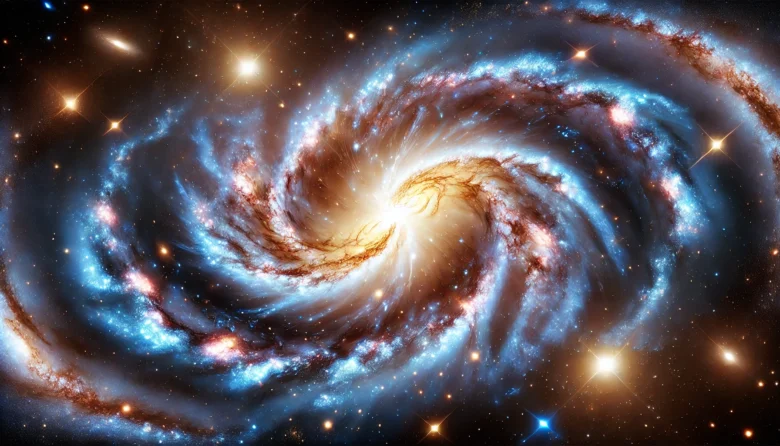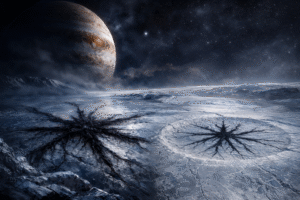Fun Fact: Did you know that the universe is home to over 100 billion galaxies, and they all started as clouds of gas and dust?
Galaxies, the vast cosmic cities of stars, planets, and other celestial bodies, are one of the most fascinating aspects of the universe. But how do these massive structures form, and what happens to them as they evolve? In this blog, we’ll dive deep into “The Evolution of Galaxies: From Formation to Expansion” to explore their origins, growth, and the ongoing expansion that shapes the universe as we know it today.
Understanding the lifecycle of galaxies can offer us incredible insights into the universe’s past, present, and future. So, buckle up as we embark on this stellar journey across billions of years!
The Formation of Galaxies: Cosmic Nurseries
Galaxies began forming over 13 billion years ago, shortly after the Big Bang. The process was kickstarted by vast clouds of gas and dark matter (a mysterious, invisible substance that makes up a significant portion of the universe). These clouds slowly condensed under the influence of gravity, creating the first stars in the universe.
Imagine the early universe as a thick soup of particles. Slowly, gravity began to pull these particles together, forming larger and larger clumps. As more matter accumulated, the dense centres of these clumps ignited nuclear fusion, creating the first stars. These stars, in turn, clustered together to form what would eventually become galaxies.
There are three main types of galaxies: spiral, elliptical, and irregular. Our very own Milky Way galaxy is a spiral galaxy, with its beautiful swirling arms. Elliptical galaxies are more spherical, and irregular galaxies have no defined shape. The type of galaxy that forms depends on factors like the amount of gas and dark matter present and the gravitational interactions they experience during their formation.

Galactic Evolution: How Do Galaxies Change Over Time?
Once galaxies form, their evolution is far from over. Over billions of years, galaxies can change shape and size and even collide with one another. Here’s how that happens:
Galactic Mergers
One of the most dramatic events in galactic evolution is a galactic merger. When two galaxies come close to each other, their gravitational pull can cause them to collide and merge into one larger galaxy. This process can take hundreds of millions of years, and while the stars within the galaxies rarely collide, the gas and dust can interact, sparking bursts of new star formation.
For example, the Milky Way is on a collision course with the Andromeda galaxy, and in about 4.5 billion years, they will merge into a new, larger galaxy. This event, often referred to as a “galactic dance,” will drastically change the appearance of both galaxies.
Star Formation and Death
Galaxies are not static entities. They are continually forming new stars while older stars burn out and die. When massive stars die, they can explode in spectacular supernovae, scattering heavy elements like carbon and iron into space. These elements are crucial for forming new planets, moons, and even life.
As galaxies age, their ability to form new stars decreases. This is because the gas needed to form stars gets used up or expelled into intergalactic space. Older galaxies, especially elliptical ones, tend to have little gas and fewer young stars compared to younger spiral galaxies.
The Role of Black Holes
At the centre of most galaxies, including our Milky Way, lies a supermassive black hole. These black holes are millions or even billions of times the mass of our sun. While black holes are known for their incredible gravitational pull, which can trap even light, they also play a critical role in galaxy evolution.
The energy released by material falling into black holes can drive powerful jets of particles out of the galaxy, influencing star formation and the movement of gas within the galaxy. This feedback mechanism helps regulate how galaxies grow over time.
Expansion of the Universe: Galaxies on the Move
One of the most mind-boggling aspects of galactic evolution is the fact that galaxies are moving away from each other. This phenomenon, known as cosmic expansion, was first discovered by Edwin Hubble in 1929. He observed that distant galaxies appeared to be moving away from us, and the farther away they were, the faster they were moving. This observation led to the theory of an expanding universe.
But what drives this expansion? Enter dark energy—a mysterious force that is causing the universe to expand at an accelerating rate. While scientists don’t fully understand dark energy, it accounts for about 68% of the universe’s total energy content. As dark energy continues to push galaxies apart, the space between them grows, and the universe becomes larger.
In the distant future, galaxies that are currently close to each other will be separated by such vast distances that they may no longer be visible to one another. This leads to intriguing questions about the fate of the universe: Will galaxies eventually drift so far apart that the night sky becomes empty? Only time will tell.
The Future of Galaxies: What Lies Ahead?
Galaxies are not static objects—they evolve, merge, and change over billions of years. Our own galaxy, the Milky Way, is set for some major changes in the distant future. As mentioned earlier, we will eventually collide with the Andromeda galaxy. But what happens after that?
In about 100 trillion years, star formation will cease entirely as galaxies use up all the available gas. The universe will become a much darker place, with only faint remnants of galaxies left behind. These dim, dying galaxies will drift through an ever-expanding cosmos, with the remnants of black holes and cold stars as the last witnesses to the universe’s early brilliance.
Conclusion
The evolution of galaxies is a fascinating story of cosmic birth, growth, and transformation. From their humble beginnings as clouds of gas and dust to their majestic forms today, galaxies are constantly evolving, merging, and expanding. As we continue to explore the universe, we’ll uncover even more about how these massive structures shape the cosmos—and our place within it.
So next time you look up at the night sky, remember that those tiny points of light are part of galaxies with their own incredible stories stretching across time and space.
Author’s Note:
The evolution of galaxies is one of the most captivating topics in astronomy, and I hope this blog has sparked your curiosity about the universe. Whether you’re an astronomy enthusiast or a casual stargazer, there’s always more to explore about the cosmos!
G.C., Ecosociosphere contributor.
References and Further Reading:
- NASA: The Formation and Evolution of Galaxies
- Science Facts for Kids | Science Facts. https://www.scifacts.net/science-facts-for-kids/
- The Role of Gravity in Shaping Galaxies – Aeroway one. https://aeroway.one/the-role-of-gravity-in-shaping-galaxies/
- Dark Energy: The Key to Anti-Gravity? | News Masters. https://news-masters.com/dark-energy-the-key-to-anti-gravity/
- universe | Education. https://vocal.media/education/universe-sjjk0ml0




